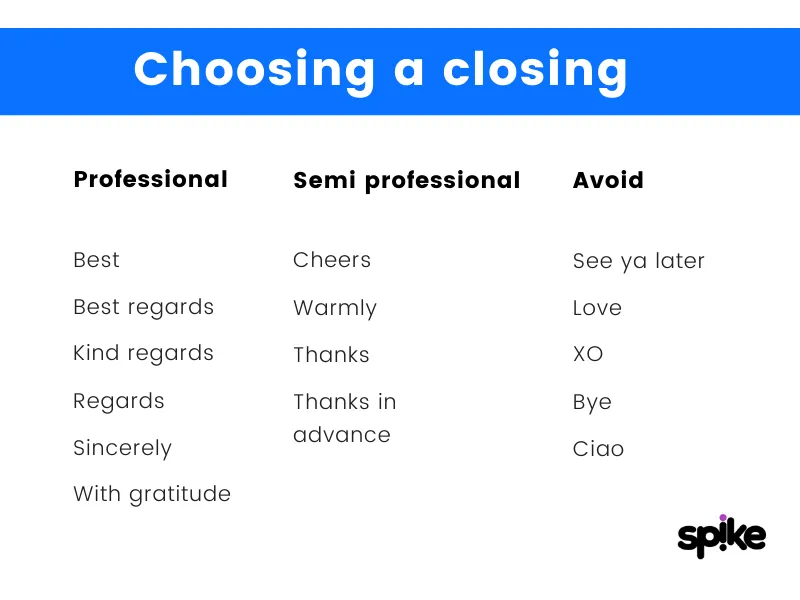How to End an Email: A Step by Step Guide
Learning how to end an email professionally can be just as important as making the right introduction. After all, you wouldn’t want to ruin all the hard work you’ve put into crafting the perfect message simply by coming across as overly familiar or rude or missing important information in your signature.
How you conclude your email will depend on who you are writing to and its purpose. However, there are a few things that ring true for any type of communication, and our guide will help you find the best way to end your email whatever its purpose.
How to Close an Email
There are a few things to remember when learning how to close an email. Generally speaking, these will be pretty intuitive, however, before you hit send, ensure that you check each item off the list so that you:
- Include a closing – You should always include some kind of closing. Be it professional or casual. Not doing so will make you look lazy or forgetful. It can also come across as a little rude, particularly when you are writing professional emails.
- Tailor your closing – Consider the purpose of your email. If it is a business-related email, then stick to a professional closing. If it is a personal email or a conversation between colleagues, then you can probably afford to be a little more relaxed. A good tip to remember, however, is if you are unsure how your email will be received, then always use a professional closing.
- Remember your signature – This is particularly important for professional emails since your signature can contain all kinds of useful information such as your title, contact details, social links, logos, photos, and even legal information.
- Check your formatting – Just like the rest of your email, the closing should be formatted so that it is easy to read and the information contained isn’t jumbled up. Make sure it is spaced correctly and your font matches the rest of your content.
How to Sign Off an Email – Choosing a Closing
When considering how to end your email, one of the most important things to remember is to choose the correct type of closing. Below, you’ll find a range of professional and semi-professional closings alongside a few that should probably be avoided. When making your choice, err on the side of caution – if you are unsure whether your closing should be professional or semi-professional, stick with a formal tone just to be on the safe side.

How to Close an Email – Formatting
Formatting is an important element of any email, helping the recipient to easily find the most important information simply by skimming the content contained. When you’re thinking about how to close your email, you should always check the formatting before hitting send. After each element of your closing, you should include a line break to keep information separate. Additionally, you should use the same font as the rest of your email and ensure any links contained in your signature are working.
Writing the perfect email takes time and patience, however, for a more conversational approach to email composition, learn about how Spike is pushing communication into the 21st century. It’s called Conversational Email, and it’s changing the way colleagues, clients and friends stay in touch.
?Check out how to add a custom signature to the end of your email, and find other helpful resources by visiting the Spike blog and discover a wealth of useful information on everything from productivity to team collaboration.




